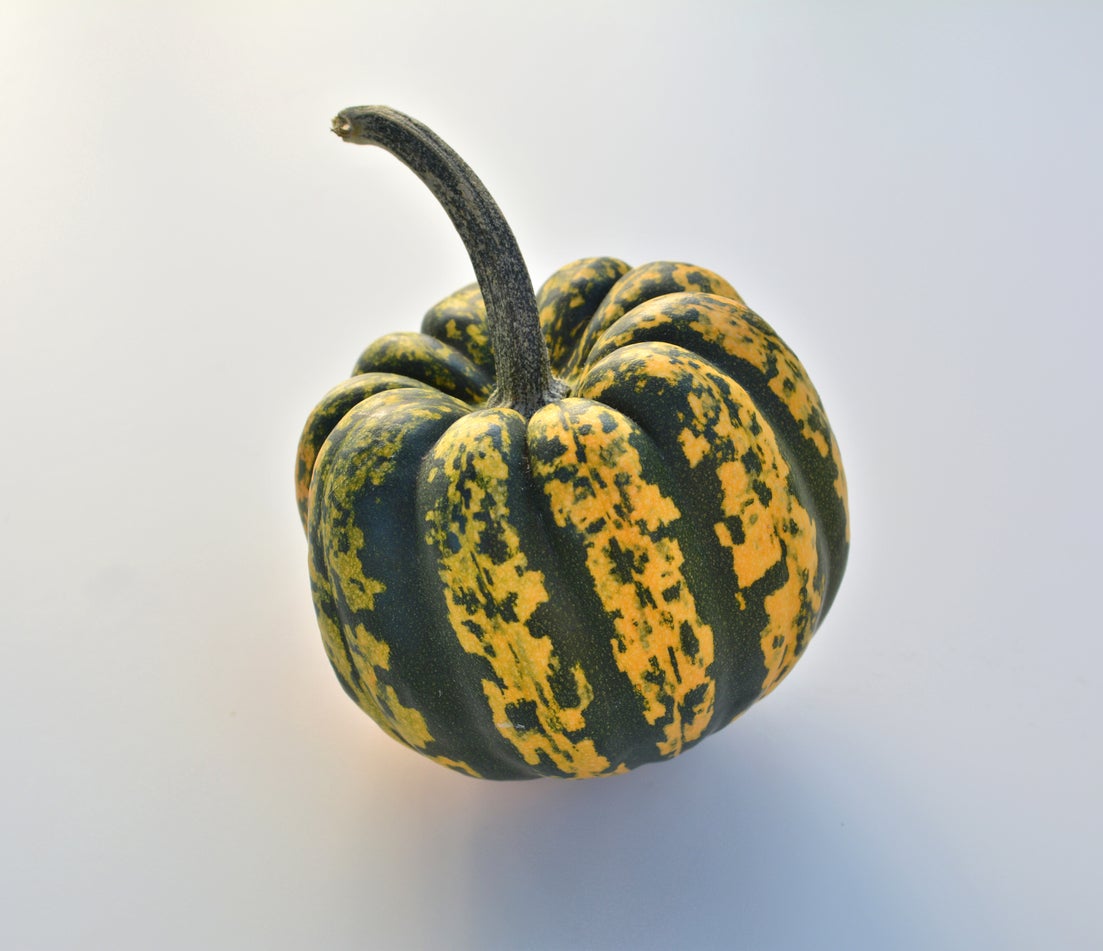
If you love winter squash but find its size somewhat intimidating, try growing Sweet Dumpling acorn squash. What is a Sweet Dumpling squash? Read on to learn about growing Sweet Dumpling squash plants.
What is a Sweet Dumpling Squash?
Sweet Dumpling squash (Cucurbita pepo) is a winter squash variety that bears small, individually-sized acorn squash. The fruit is about 4 inches (10 cm.) in diameter, perfect for roasting whole or stuffing. The exterior is a deeply ribbed, ivory white or cream marked by dark green stripes, while the interior is an incredibly sweet, tender orange color.
This winter squash stores well post-harvest and is incredibly productive, generally producing 8-10 fruits per vine. It is also fairly disease resistant.
Growing Sweet Dumpling Squash Plants
Sweet Dumpling squash is an open-pollinated heirloom winter squash that can be grown in USDA zones 3-12. Sweet Dumpling is ready for harvest a mere three months from direct sowing.
Sow this variety of winter squash as you would summer squash. That is, sow the seeds an inch (2.5 cm.) or so deep after all danger of frost or start indoors a month prior to the last expected frost in your area. Squash doesn’t do well with transplanting, so if you do start them indoors, sow the seeds into peat pots. Be sure to harden the seedlings off for a week prior to transplanting.
A week after the last frost, transplant the seedlings into a rich soil 8-10 inches (20-25 cm.) apart in rows that are 10-12 inches (25-30 cm.) apart, or in hills of two seedlings spaced 8-10 inches (20-25 cm.) apart.
If you choose to direct sow, plant the seeds a week after the last frost about ½ inch deep (1.27 cm.) and 3-4 inches (7.6-10 cm.) apart. When the seedlings have their first set of true leaves, thin them to 8-10 inches (20-25 cm.) apart.
Sign up for the Gardening Know How newsletter today and receive a free copy of our e-book "How to Grow Delicious Tomatoes".
Keep the plants moist but avoid getting water on the leaves which may become afflicted with fungal diseases. Place a layer of mulch around the plants which will help to retard weeds and retain moisture.
As soon as the stems begin to dry and the skin of the fruit is too hard to pierce with a fingernail, harvest the squash. Cut the fruit from the vine with a sharp knife, leaving a bit of stem attached to the squash. Cure the squash in a dry area until the stem begins to shrivel and then store in an area that is 50-55 degrees F. (10-13 C.).

Amy Grant has been gardening for 30 years and writing for 15. A professional chef and caterer, Amy's area of expertise is culinary gardening.
